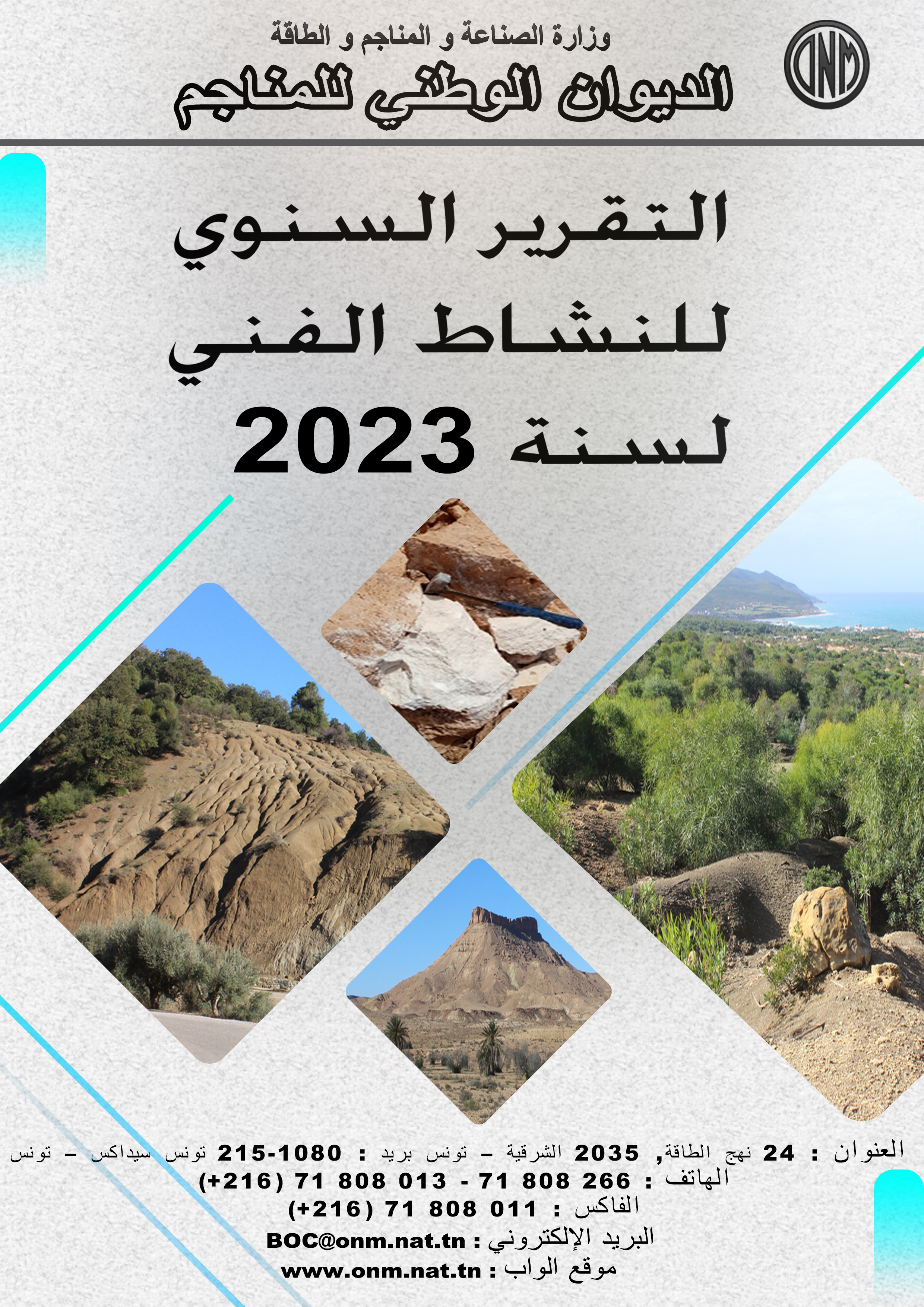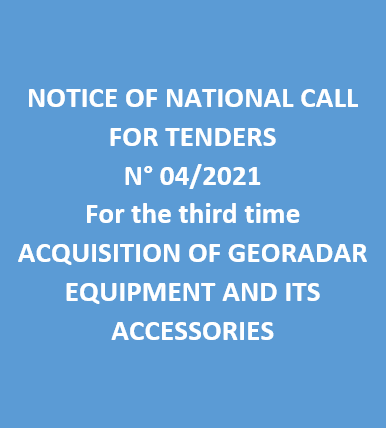| Annual program and technical progress report |
-

Technical Program 2025
-

Activity Report 2023
|
| Geocatalogue |

|
| Invitation to
tender |
-

REALIZATION OF THE TRAINING PLAN FOR THE YEAR 2022
-

ACQUISITION OF TWO SERVICE CARS
-

ACQUISITION OF GEORADAR EQUIPMENT AND ITS ACCESSORIES
|
|
Invest in Tunisia |

|
|
|
|
|
::
Documentation and Editions
>>
Research library
|
| |
|
[
Search by author
]
[
Search keyword
]
[
Search by index
]
[
Search by category
]
|
title of the reference :
|
The growth and migration of two Turonian rudist-bearing carbonate platforms in Central Tunisia, eustatic and tectonic controls.
|
|
Publication Date:
|
2003
|
|
Author :
|
Soussi Mohamed, Touir Jamel
|
|
Catalogue type :
|
Livre
|
|
Catalogue reference :
|
The growth and migration of two Turonian rudist-bearing carbonate platforms in Central Tunisia, eustatic and tectonic controls. Between the Early and Middle Turonian times, two rudist-bearing carbonate platforms developed successively in Central Tunisia : the Gattar platform (Lower Turonian) and the Bireno platform (Middle Turonien). They were controlled mainly by eustasy and tectonics. According to analysis of the vertical facies variations, and considering the major unconformities and regional correlations, the Gattar and the Bireno platforms were related to the early hight stand and the late high stand respectively of a sea level fluctuation, correlatable with the UZA-2,5 global cycle. Sediment progradation induced the migration of the carbonate platforms basinwards. The Turonian structural framework controlled the geographical extension of these platforms, since they were restricted to relativley narrow and more or less tilted blocks, wedged by the major faults of Central Tunisia. Tectonics also governed the platform morphology, the first platform corresponds to a ramp whereas the second one developed as a shelf with raised rims. The rudists, whose growth was related to both eustatic and tectonic factors, have in turn marked the platform edge with a discontinuous congregation belt. The shift from the Gattar platform to the Bireno one as well as the transition to the northern open marine domain may be observed particulary in the Jebel M'rhila area. référ. bibliogr. Turonien ; plateforme carbonatée ; lithostratigraphie ; sédimentologie ; formation El Gattar ; formation Biréno ; formation Bahloul ; Tunisie ; Tunisie Centrale ; J. M'rhila ; J. Semmama ; J. El Kebar ; J. Meloussi ; J. Ben Younes ; J. Orbata ; Kalaat Senan ; J.Berda Touir Jamel Soussi Mohamed Stratigraphie
|
|
Indexation decimale :
|
Stratigraphie
|
|
Keywords :
|
Turonien ; plateforme carbonatée ; lithostratigraphie ; sédimentologie ; formation El Gattar ; formation Biréno ; formation Bahloul ; Tunisie ; Tunisie Centrale ; J. M'rhila ; J. Semmama ; J. El Kebar ; J. Meloussi ; J. Ben Younes ; J. Orbata ; Kalaat Senan ; J.Berda
|
|
Summary :
|
Between the Early and Middle Turonian times, two rudist-bearing carbonate platforms developed successively in Central Tunisia : the Gattar platform (Lower Turonian) and the Bireno platform (Middle Turonien). They were controlled mainly by eustasy and tectonics. According to analysis of the vertical facies variations, and considering the major unconformities and regional correlations, the Gattar and the Bireno platforms were related to the early hight stand and the late high stand respectively of a sea level fluctuation, correlatable with the UZA-2,5 global cycle. Sediment progradation induced the migration of the carbonate platforms basinwards. The Turonian structural framework controlled the geographical extension of these platforms, since they were restricted to relativley narrow and more or less tilted blocks, wedged by the major faults of Central Tunisia. Tectonics also governed the platform morphology, the first platform corresponds to a ramp whereas the second one developed as a shelf with raised rims. The rudists, whose growth was related to both eustatic and tectonic factors, have in turn marked the platform edge with a discontinuous congregation belt. The shift from the Gattar platform to the Bireno one as well as the transition to the northern open marine domain may be observed particulary in the Jebel M'rhila area.
|
|
Exemplaries :
|
-
|
|
|
|
|
|
|
|



